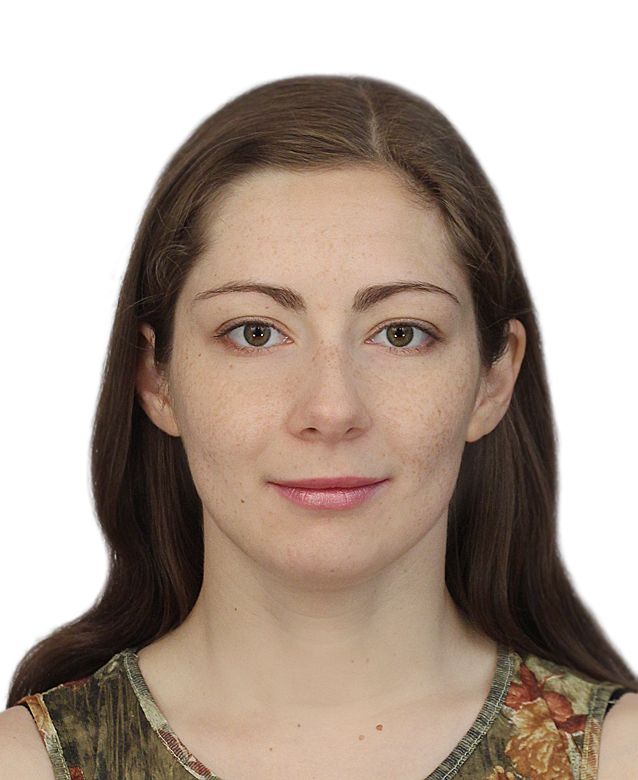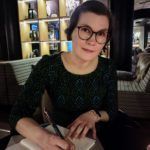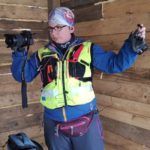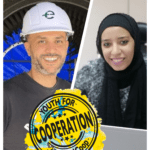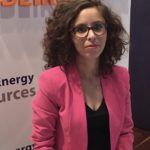Voices from the field
Aleksandra Tceitlina
Plants eating oil for a natural clean-up of the Arctic
Can nature cure itself, with a little boost from people? Can microorganisms eat oil, speeding up a self-recovery process after pollution? Oil and hydrocarbon pollution has become a real threat to the Arctic coast. Over the past 15 years, there have been several major ship oil spills in the coastal waters of Russia, Norway and Finland – with amounts of oil spilt in one incident ranging from 80 to 500 tons. While the Arctic is rapidly developing, it remains fragile from the environmental point of view. Arctic Coast Bioremediation is an ENI CBC Kolarctic project, researching and developing a promising method based on a natural self-recovery process to clean up the polluted coastal zones in the Arctic.
We have talked to Aleksandra Tceitlina, Senior Consultant from OOO Storvik Consult (Murmansk, Russia) – one of the five project partners – who has brought us closer to the wonders of biotechnology and oil-hungry microorganisms.
What is bioremediation?
Bioremediation is an integrated method for cleaning the soil and the water in the natural environment, by using the metabolic potential of biological objects, such as plants and microorganisms. When there is an oil spill, the oil flows to the shore and contaminates the surface, and then penetrates deep under the ground. We are trying to identify which microorganisms we can take, inspire and activate to eat faster the oil that lays on the surface and underground. This is one of the healthiest, most natural ways, because we do not introduce something that was not already there. We just use what nature can provide us with, boost it and put it back to nature, triggering a faster, self-cleaning process.
How do you activate these microorganisms?
Our partners from Norway and Finland conduct research to find out which part of the DNA from the selected microorganisms are responsible for the oil-eating. Once identified, those parts are stimulated, genetically multiplying the enzymes in the laboratory in order to create a natural product that will be hungrier for oil than before. Then we put it back to the shore ground, and let it have its feast!

Of course, we do a lot of laboratory testing before. We are testing the reaction of the microorganisms’ consortia towards the contaminated samples of oil, sand and seawater, simulating with special equipment the real conditions of the Arctic – wind, low temperatures, and waves.
Remediation of the arctic coast, how big is the problem?
Unfortunately, oil spills are very frequent these days. One of the latest incidents occurred in November 2019 when the Norwegian frigate Helge Ingstad collided with a tanker carrying 65,5 thousand tons of oil – about 10 tons fuel ended up in the seawater…

Arctic ecosystems are extremely fragile – they are characterized by a low capacity for self-healing and therefore oil pollution is very destructive for them. Also, the value of each species of flora and fauna increases due to their low diversity in comparison with southern latitudes.
Economic activities to develop oil and gas resources are growing very rapidly, the oil transportation from ports on the coast of the Barents, Norwegian, White and Kara seas is on rising. The cargo traffic along the Northern Sea Route is bound to increase to 80 million tons by 2024…This will mean a higher risk of oil spills and contamination in the area. The Arctic is developing very quickly and we should be ready for that.
The project is in the middle of the implementation period: what have you achieved so far?

We have created consortia of active microorganisms and studied the toxicity of different types of oil. We have also assessed the oil -destruction capacity of the consortia for different substrates at low temperatures and the next step will be to collect the plants that live in the Arctic zone and to find out which species will help the area to recover after oil contamination. The final aim is not only to clean the area, but to restore the ecosystem. This way we will be able to conduct the whole cycle of recovery – on the micro and macro level.
Has the pandemic affected the course of implementation activities in any way?
 Yes, spring and summer seasons are very important for us because this is the time of the year with most vegetation in full growth. We were planning to meet up and exchange plants samples in order to select the best ones. Due to the border-crossing restrictions we couldn’t meet physically, yet we were in contact all the time and managed to share results. Fortunately, we still have one more year to go!
Yes, spring and summer seasons are very important for us because this is the time of the year with most vegetation in full growth. We were planning to meet up and exchange plants samples in order to select the best ones. Due to the border-crossing restrictions we couldn’t meet physically, yet we were in contact all the time and managed to share results. Fortunately, we still have one more year to go!
Will the results be relevant to other areas?
Yes. Even though the biotechnology that we are developing is based on “native” organisms – typical for the Arctic zone – the proposed approach and methodology can be used by any region. We are planning to share the results of our research, but a mandatory step is to test the technology considering the specificities of each region.
To produce the research, five partners from three countries have worked together: which benefits have you received from this cross-border cooperation?
The consortium is reuniting the best from each of the three countries. In 2019 we visited the labs of the partners to see how things are being done elsewhere, to exchange samples and knowledge. Every partner of this big project got to improve their own technology and know-how. Plus, our participation in scientific conferences, the discussions with colleagues in the three different countries, contribute to a wider publicity. From the research point of view, the collaboration allows us to figure out which are the most convenient species from each country, and to combine them together for the final product: this wouldn’t have been possible without cross-border cooperation.

